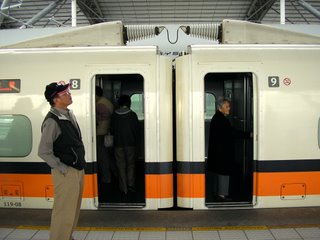 After almost six years of construction, the Taiwan High Speed Rail system finally began trial runs open to the public on Friday. Since then, we've heard news of all sorts of bugs floating to the surface, everything from malfunctioning ticket gates, buggy booking software, bird strikes on moving trains, to passengers being unfarmiliar with toilets actually capable of processing toilet paper (as any decent toilet should!). Yet the core system continues to function mostly without incident, and the apocalypse scenario predicted by critics with trains derailing and exploding left and right has not materialized. And crowds of people continue to line up at HSR stations up and down the western corridor, eager to try out the train for themselves, some coming from as far as Japan just for the experience.
After almost six years of construction, the Taiwan High Speed Rail system finally began trial runs open to the public on Friday. Since then, we've heard news of all sorts of bugs floating to the surface, everything from malfunctioning ticket gates, buggy booking software, bird strikes on moving trains, to passengers being unfarmiliar with toilets actually capable of processing toilet paper (as any decent toilet should!). Yet the core system continues to function mostly without incident, and the apocalypse scenario predicted by critics with trains derailing and exploding left and right has not materialized. And crowds of people continue to line up at HSR stations up and down the western corridor, eager to try out the train for themselves, some coming from as far as Japan just for the experience.As I blogged earlier, I was lucky enough to get tickets for the fourth train to run - Train 405 from HSR Banciao Station in Taipei County to HSR Taichung Station located in the township of Wu Erh (烏日) last Friday. My original plan was to spend about two hours around HSR Taichung Station, but family obligations necessitated that I continue on to Tainan... thus giving me a chance to see how smoothly I could make the connection from the THSR to a TRA train (THSR tickets were sold out for all trains on Friday and Saturday by early morning Thursday).

HSR Banciao Station is located in the same building as the TRA and MRT stations of the same name. It's also one of the two HSR stations to the built underground into a preexisting facility (the other being the yet to be opened HSR Taipei Station), a giant new glass and pink granite tower more reminiscent of a shopping mall than a train station. Arriving at Banciao Station about twenty minutes before departure time I found my way to the B1 level where the ticket gates for HSR and TRA are located. Being the first day of operations, there were several passengers and HSR personnel milling around the area and there was a palpable sense of excitement in the air. Needless to say there were a lot of cameras out, flashbulbs going off, and people giving the two fingered salute.
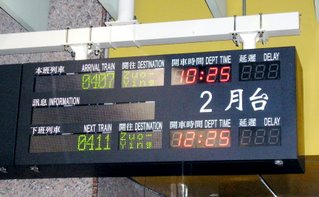
At the ticket gates, an HSR employee stood around reminding passengers to insert their tickets into the gates with the magnetic stripe facing up. Short explanation: the HSR tickets are thin card stock with a magnetic stripe and instructions on one side, and the passenger's train and itinerary information printed on the other. Despite instructions on the gates (and the ticket for that matter... though not in English), most passengers, myself included are tempted to automatically stick the tickets into the gates with the magnetic stripe down, in which case the gates won't work. This seems to be a design flaw. Being an engineer myself I can empathize a bit with the difficulties of creating an idiot-proof interface, but really, this was something the designers could have thought of. Aside from that issue, I did not experience any problems with the ticket gates though there were continuous reports throughout the weekend of gates malfunctioning due to folded or bent tickets. Perhaps I was just lucky to get there earlier than most of the weekend crowds.
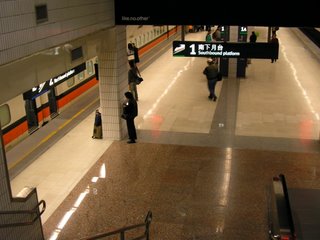
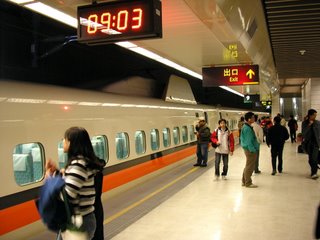

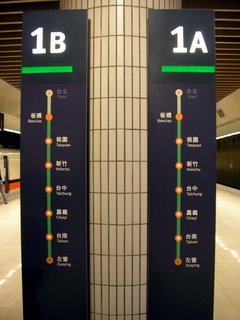
Proceeding past the ticket gates and the small waiting area, I headed down the escalators to the platforms on the B2 level. As it turned out, our train was already there, though the doors were blocked off for cleaning, giving me a chance to look around. Though built into what I believe was a former TRA facility, the HSR platforms already showed signs of the slick high tech image that THSR has been working to cultivate. The styling is noticeably cleaner and, tickets not withstanding, there is a greater proliferation of English signage. The slowly growing crowd of passengers seemed to be a pretty diverse mix of students, retirees, businessmen, and the occasional Japanese tourist. All excited at the prospect of trying out the future of Taiwan's public transit system and cheerfully snapping away with their cameras at pretty much anything that moved. Throughout the trip I also noticed several Asian and European people with THSR badges, engineers I think, walking around checking things.
About five minutes before the scheduled departure time, the janitors finished up their cleaning work and we were allowed to board the trains. Somehow I managed to be the second person aboard my train car. The interior compartments of the trains are brightly lit, spotlessly clean (hopefully they still are), and a faint plasticky "new train" smell hung in the air. My economy class compartment consisted of a long aisle of turquoise cloth covered seats arranged in two long columns with two seats on one side and three on the other. Fold down coathangers were located in each row, and each reclining seat had a fold down airplane style tray table with a diagram showing the layout of the train on the backside. The seats were wide and quite comfortable, about the width of seating on a typical TRA express train, with legroom much larger than what you'd find on a plane.
The compartments between the cars contained the lavatories, as well as vending machines selling some beverages in a few of the cars. Due to the longest trip being around 2 hours there is no 高鐵便當 (Correction: Apparently there is.), though passengers are allowed to bring their own food and drink aboard provided it is not too strong smelling (stinky tofu and durians are banned). There are also food carts pushed up and down the trains by attendants where one may buy snacks or drinks, though I did not see any sign of them throughout my 55 minute trip to Taichung.
At precisely 9:25AM, our train pulled out of Banciao Station beginning our trip south. The THSR 700T trains are noticeably smoother and quieter than your typical TRA train, with much less vibration though some noise is still detectable, especially from what I think was the electrical system during acceleration. The acceleration is gradual so there really isn't a sense of being thrown back into your seat as you might expect, but the increased speed is definitely noticeable as you speed through the cities and countryside. The train speed was displayed periodically in a scrolling display at either ends of the compartment, and mostly hovered somewhere around 290 km/h throughout most of the trip, though I did see it go as high as 298 km/h (the max speed is 315 km/h). In about 15 minutes, we had left Taipei County and were pulling into Taoyuan Station. In another 15 we were at Hsinchu Station where I was able to poke my head out for a quick photo.
After only 55 minutes, we arrived at HSR Taichung Station, located in Wu Erh Township on the outskirts of Taichung City. As the major midway point, the station was filled with passengers, press, and police officers. The station itself is, like most of the other new THSR stations, a very modern looking structure of glass and aluminum and steel struts. Coming down the escalators from the platform into the main concourse, one finds a scene more evocative of an airport terminal than a train station, with restaurants, stores and such. Outside, there are already signs of new developments springing up in what used to be rice paddies.
Transiting from THSR to TRA is actually easier than I expected. Like several of the THSR stations, HSR Taichung Station is located along a TRA rail line. The TRA New Wu Erh Station is connected to the HSR station by a covered overpass, from which one may transfer to local commuter trains.
Having experienced the THSR firsthand, there are definitely some problems and flaws which need to be worked out, especially in terms of the effects of handling large amounts of people as well as providing a more user friendly interface, but overall, I have to say that I'm quite impressed by what I saw. Some growing pains are inevitable but the THSR is definitely a system which we can all be proud of once the kinks are ironed out. With the increasing urbanization of Taiwan's west coast it will definitely play an important part in transportation between the major metropolitan areas in the years to come.
The THSR is certainly impressive but it is by no means the death kneel for the comparatively more "blue collar" TRA. As many have noted, perhaps the greatest weakness of the THSR is the fact that many of the stations are located outside major metropolitan areas. It is also important to note that the THSR functions as only one component of a larger transit net, providing high speed travel over sparsely spaced nodes, with other forms of transportation filling in the gaps to local areas... a function which TRA fills nicely, and has in fact been slowly turning to with the increased emphasis on short distance commuter trains in recent years. It is reassuring that the powers that be have noticed this and from what I have seen at stations such as Banciao and Taichung, facilitated relatively smooth transfers between the HSR and the TRA (as well as the Taipei MRT for the former). It remains to be seen however, whether this can be achieved at HSR stations not in close proximity to TRA lines, such as Tainan, though there are encouraging signs with local bus companies setting up shuttle services.
In the coming days we're sure to hear more first hand accounts of the THSR around the blogosphere. David on Formosa will be taking the HSR fairly soon, and has in the past made several very insightful observations on the THSR, urban design, and mass transit in general. I'm sure there will be others as well.
Tags: [Taiwan], [Trains], [Taiwan High Speed Rail]

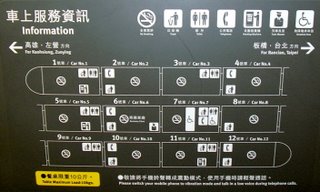


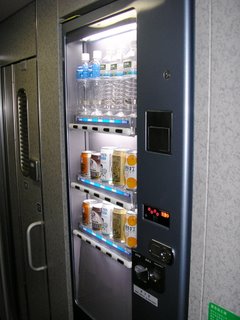
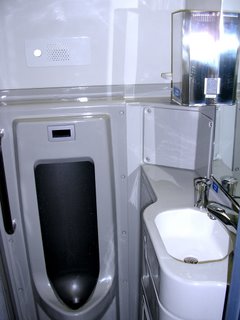





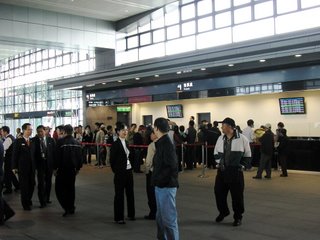
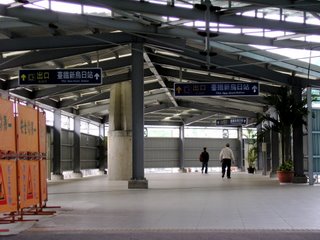

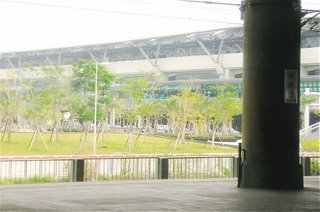
No comments:
Post a Comment